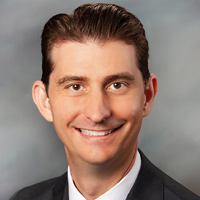
Roth accounts — IRAs and 401k(s) — garner a lot of attention in the financial media, and thus in the minds of savers and investors, due to their main feature of offering the potential for tax-free growth and withdrawals. But are they the best idea in every — or even most — situations? Let’s take a look.
When Do Roths Make Sense?
Several areas of financial planning involve decisions around when, how and how much money to put into Roth accounts. Retirement planning, tax planning and estate planning come first to mind, but the overarching reason always boils down to one thing: The growth on those contributions, assuming all the rules are followed, will never be taxed.
The obvious flip side to this feature is that the contributions are taxed at whatever tax rate the investor happens to be in when they are made. Thus, a Roth is a better option than a pre-tax 401(k) or IRA if the tax bracket an investor is in when they pull the funds out is higher than the one they are in when the contributions are made. The unspoken elephant in the room is that this is almost never the case.
Example 1
A married couple in their 50s has a combined gross income of $200,000. They each make the maximum allowable 401(k) contribution, plus catch-up, and take the standard deduction on their 1040. Add in some pre-tax deductions for health insurance, and these folks are in the 22% tax bracket regardless of if they make their 401(k) contributions pre-tax or Roth.
If they choose to go pre-tax now — and pay the taxes when the funds are withdrawn — they will very likely be in the 22% tax bracket for the rest of their lives. However, should they choose to go Roth with their contributions now, they will pay the 22% today, and will pull the funds out tax-free in retirement. In either scenario, they are paying 22% taxes on the dollar amounts in question. Their choice will determine when the taxes are paid, but not the amount. Making Roth contributions to their retirement accounts is not a clear tax savings — certainly not today, and most likely not in the future.
This is not to say this couple might not have the opportunity to convert a portion of their pre-tax accounts to Roth in the 12% bracket early in retirement, ideally before they start taking Social Security. But they’ll cross that bridge when they come to it. Advisor Andy Panko has written about the futility of planning based on future variables that may be wildly different than what’s expected.
Example 2
A single investor early in her career is earning $65,000 per year. She is an engineer and can expect her income to rise to six figures relatively quickly. She is a “super saver,” and can stick to a budget, so she is able to contribute her personal maximum 401(k) contribution of $20,500. If she chooses to go with Roth contributions, she will be in the 22% tax bracket, but if she chooses traditional pre-tax, this will bring her down to the 12% bracket, after her 401(k) contributions and other deductions. She will not be in this bracket for very long and will probably never see it again once her income begins to arc higher.
The only semi-realistic way this investor might find herself in a higher tax bracket in retirement than during the bulk of her working career — even if she gets married — is for her pre-tax IRA to grow to the mid-seven figures by the time RMDs begin. Not completely unheard of, but clearly a “best-case scenario.” So, what’s the advice here?
She is a good candidate for Roth contributions, today. Given what we know about this investor, she will be in higher tax brackets in the future and should change her contributions to pre-tax as her income rises. As time goes on, after she has maxed out her pre-tax IRA, she could be a good candidate for the Mega Back Door Roth strategy that Monica Dwyer has elaborated on.
The Long Game
Because of the tax-free growth provided by Roth accounts, it makes sense for investors to leave their balances untouched for as long as possible, thus maximizing the amount of tax-free compounding that can occur. This takes us away from retirement planning and into estate planning. Astute advisors assume their clients’ Roth accounts will be last in the distribution order for retirement withdrawals — or never touched at all.
Let’s look back at our young engineer and say that she did begin contributing to a Roth account this year, in her mid-twenties. Based on current law, the funds in that account are not required to be distributed until 10 years after her death. (We are assuming that the funds are ultimately rolled from her Roth 401(k) into a Roth IRA.) In this scenario, if she manages to make it to 90, those first contributions made today will have been growing tax-free for 75 years when finally withdrawn by her beneficiary. There is no other investment vehicle with that kind of compounding power. This makes Roth accounts among the most powerful estate-planning tools in an advisor’s arsenal and is the best-use case for adding some Roth contributions to investors’ financial plans.
Roth accounts can be a useful planning tool in some situations, and some investors can realize a benefit from contributing to them. But when a choice must be made between Roth and pre-tax, it almost always makes the most sense to take your tax deduction while you can get it and opt for the pre-tax route.
DJ Hunt, CFP is a fee-only financial advisor with Moisand Fitzgerald Tamayo, LLC. in Melbourne, Florida. His clients include working professionals, business owners and retirees. DJ can be reached at dj@moisandfitzgerald.com.







